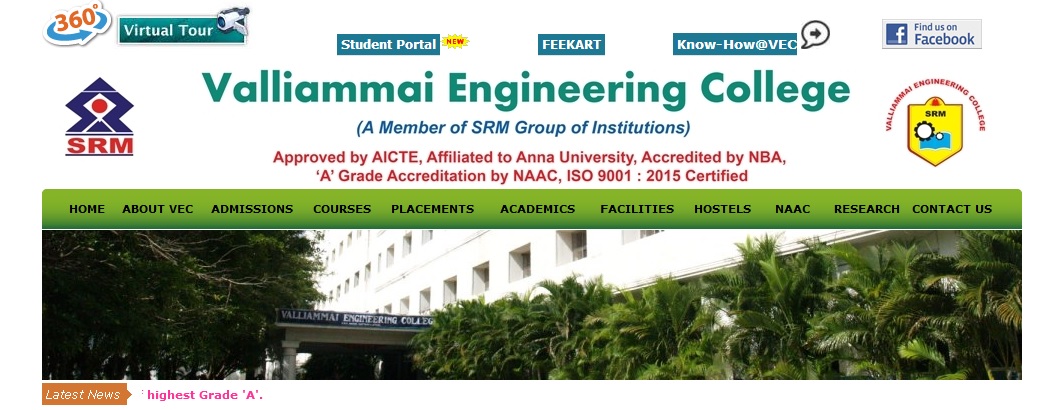IT2032 Software Testing B.E Question Bank : valliammai.co.in
Name of the College : Valliammai Engineering College
University : Anna University
Department : Information Technology
Subject Code/Name : IT2032 Software Testing
Degree : B.Tech – IT
Year : IV
Semester : VII
Document Type : Question Bank
Website : valliammai.co.in
Download :https://www.pdfquestion.in/uploads/va…%20Testing.pdf
Valliammai Software Testing Question Paper
Unit I
Part-A :
1.What is test case? what are the information it contains?
2.Differentiate verification and validation.
3.List the defect classes.
4. Name the different levels in Testing Maturity Model. Also mention the key activity in each of the levels
Related : Valliammai Engineering College GE6151 Computer Programming B.E Question Bank : www.pdfquestion.in/2850.html
5.what is meant by validation and verification?
6.define software process.
7.name the TMM Levels.
8.give an example for design defect and testing defect.
9.list the defect classes. Give an example for each of the class.
10.name the different levels in testing maturity model. Also mention the key activity in each of the levels.

11.define the term defect.
12.write the role of process in software quality.
13.list the categories that defects fall into.
14.write the major components in a software development process.
15.write the verification activities of design phase of the software development.
16.list any 2 classification of defect.
17.distinguish between fault and failure.
18.differentiate the process of testing and debugging.
19.what is the basic objective of software testing? what is its scope?
20.define software quality.
Part-B :
1.a.Explain the various software testing principles. (8)
b. Define correctness, reliability, integrity, interoperability. (8)
2.a.Define defect and write the various origins of defects. (8)
b. Explain the concepts of defects with the coin problem(8)
3. a. Explain the various software testing principles.(8)
b. Explain the process of defect repository development and the role of developer in it.(8)
4.a. Discuss the information in defect repository(8)
b. Explain the tester’s role in software development organization(8)
5. a. Compare and contrast errors, faults and failures using suitable examples (8)
b. Explain the different phases in testers mental model (8)
6.a.Wuthsutable examples explain the various types of defects and their effects(8)
b. Explain the role of tester in software development organization.(8)
7.Explain in detail processing and monitoring of the defects(16)
8. a. List and discuss the components of software development process(8)
b. List and discuss the technological developments that are causing organizations
to revise their approach to testing.(8)
9.a.Why is it important to meticulously inspect test result? Give Example? b.Discuss the drawbacks incase if you fail to inspect.
10. a. Why is it necessary to develop test cases for both valid and invalid input condition. b. How important is document for product? How will you test requirement and design Document?
Unit II
Part-A :
1.Write down the limitations of random testing.
2. What is a Test case?
3.what is black box approach. 4. What is a control flow graph.
5.Write the two basic testing strategies used to design test cases.
6..State the need for code functional testing in test case design.
7.List out the people who are associated with testing
8.Give the role of process in software quality.
9.define boundary value analysis.
10.how to compute cyclomatic complexity?
11.what is meant by desk checking?
12.define code complexity testing. how it can happen?
13.identify the equivalence classes in testing the program for quadratic equation solution.
14.how is mutation testing helpful in testing the software?
15.what is random testing?
16.enumerate the black box testing methods. Also write one merit for each.
17.what is the smarter tester?
18.what is post implementation testing?
19.which testing strategy is best to uncover the defect? why?
20.what are the objectives of requirement testing?
Part-B :
1.Explain the concepts of equivalence class partitioning and boundary value analysis.
2. Explain the various additional white box test design approaches.
3.Explain the concept of Equivalence class partitioning and boundary value analysis with example
4. Develop black-box test cases using equivalence class partitioning and boundary value analysis to test a module for ATM system.
5.a. In what way black box testing and COTS can be compared?(8)
b. When to start testing process and why? discuss(8)
6.Explain in detail about additional white box test design approaches
7.a,Explain in detail about code coverage testing.(8)
b. Explain with neat flow chart code complexity testing.(8)
8. With suitable test cases explain the various white box approaches .state the cyclomatic complexity measure used in it.
9.With suitable examples explain in detail the following test approaches.
a. Boundary value analysis(8)
b. Equivalence class partitioning(8)
10. What is test strategy? Explain the methods for developing test strategy.
Unit III
Part-A :
1. Write the workable definition for a software unit and characterize it.
2. Define test harness
3. Differentiate verification and validations.
4. Write the two basic testing strategies used to design test cases
5.What is Unit Testing?
6. Why is it so important to design a test harness for reusability?
7. Bring out the need for the levels of testing.
8. Define regression testing.
9. What are the various tools available for internalization?
10. Define unit test. Give example.
11. Quote an example and explain test adequacy criteria.
12. Define alpha and beta testing.
13. What is the difference between alpha and beta testing?
14. What is the function of a moderator in inspecting a test plan?
15. Define usability testing.
16. Define accessibility testing
17. Define scenario testing.
18. Define performance testing.
19. Define internalization testing.
20. Define system testing.